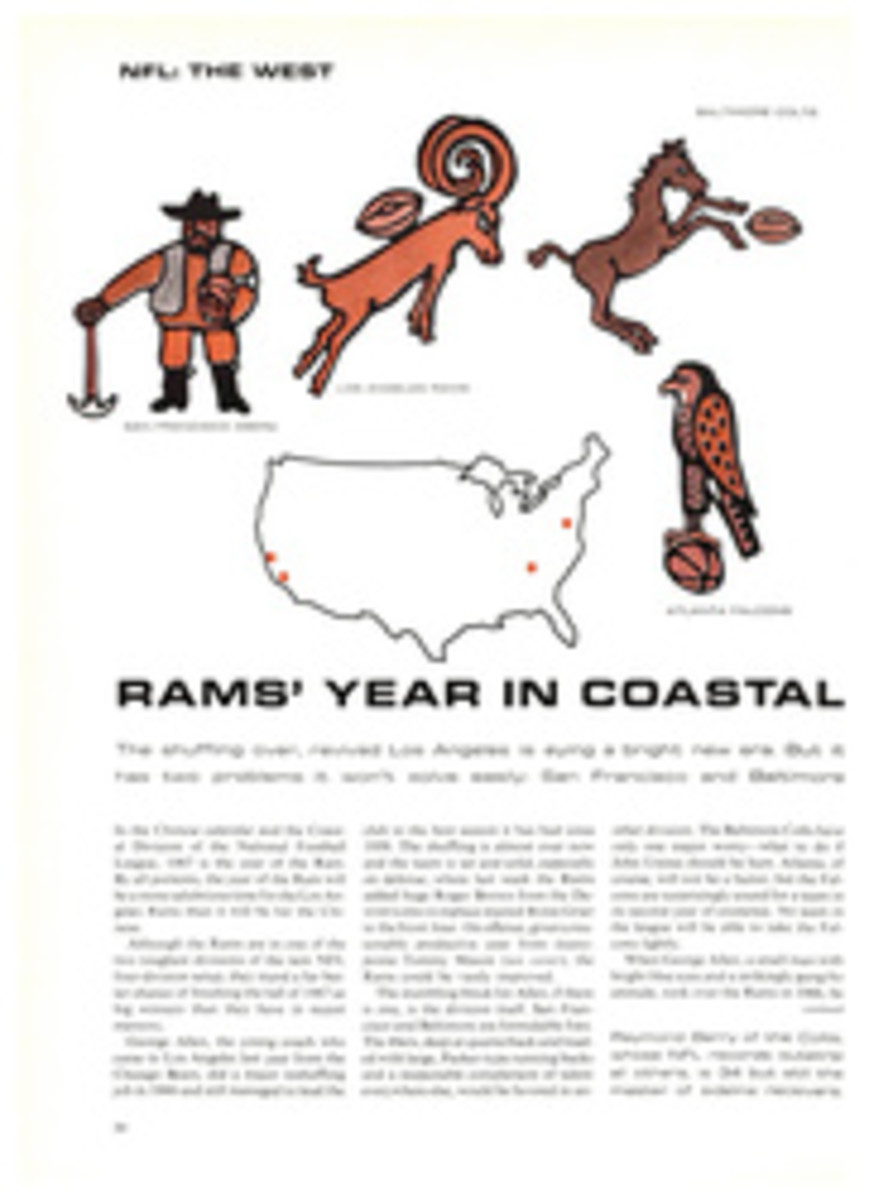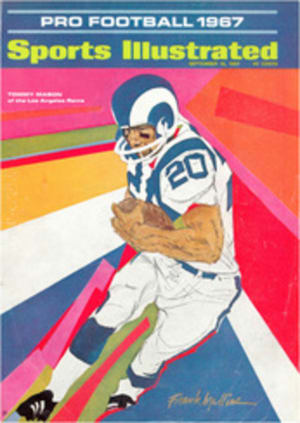
D'ye Really Ken John Peel?
How often have groups of convivial fellows inquired of each other in sturdy tones and a rollicking lilt, "D'ye ken John Peel with his coat so gray?" And how many of them actually do ken him, or anything much about him?
The answer is few, if any, for though John Peel is certain to be found in almost any collection of tunes designed for community singing, even the color of his coat is open to question. Some versions of the old song substitute the word "gay" for "gray" on the assumption that Peel was a gentleman hunter from the rich Midland shires and thus would go after the fox clad in the vivid scarlet known correctly as "hunting pink." They are mistaken.
John Peel neither was a gentleman in the snobbish sense of the word nor did he hail from the English Midlands. A big, gaunt-featured man, six feet tall and weighing a solid 180 pounds, he was one of those twice-as-large-as-life characters that have always permeated the English countryside. He came from the tough, steep slopes of the Lake District, that magically different part of England tucked away behind the hills in the extreme northwest of the country. In Caldbeck village the houses are of gray stone, the roofs of gray slate, blending perfectly with the gray mists that shroud those hills on the greater number of days each year. There Peel was born in 1776, of farming stock, and there he died and was buried 78 years later. His gray hunting coat, spun from the fine wool of the local sheep, fitted the color scheme perfectly.
Peel made a show of working on his parents' small farm, but his heart was in the hunt, and though his book education was sadly lacking he knew, better than any man, what wiles a fox could get up to. Hunting in the Cumberland fells is as different from chasing in the Midland shires as chalk is from cheese. There are no great green pastures, but heather and scree, crag and rock to harbor the foxes that do such awful carnage among the lambs belonging to local farmers. Those fell foxes have the speed of greyhounds, the ferocity of wildcats and a special cunning of their own, and the folk of the fells regard fox hunting as an essential part of vermin control. John Peel thought it his enjoyable business to help agriculture in this way.
For the sound of his horn
brought me from my bed....
Some of Peel's hunts were prodigious tests of endurance, both for himself and his followers. Roused at dawn, riders were expected to be fed, dressed and in the saddle by sunrise. An old dog fox might be flushed out of hiding in a deep valley and make straight for the fells, running along a wall top to throw hounds off the scent. On the icy summit the horses could no longer tread safely. Peel would dismount, clap his horse Dunny on the withers and leave it to follow him and his friends as they pressed ahead on foot. Peel knew this country as well as the foxes that lived in it. He directed the hunt from crag to outcrop along the precipitous heights 3,000 feet up. At last the old fox, unluckily for him, might reach a plateau among the tops, and the faster chase would be on again. Waiting for Peel would be Dunny, who by some telepathic sense knew precisely where to meet his master after a parting of an hour or more. Fresh as a daisy, Peel would remount; fresh as a daisy, he would be there at the kill. At 4 in the afternoon the hounds might have covered 50 miles, and Peel and his men half that distance, much of it on foot.
Somewhere, in some home or hostelry, a team of women would have been preparing a vast meal for the famous huntsman and his cronies. Their favorites were stewed goose, salted salmon, pork trotters and "tatie pot"—an indigenous Cumberland dish of mutton, mushrooms, potatoes and turnips. Accompanying the meal was a proportionate amount of liquor—brown ale to quench the immediate thirst, then cheap rum and brandy, probably smuggled in from the coast, to start the songs.
"We have killed a fox," Peel might have cried, "and it munna' be a dry one."
On a November day in the year 1854 John Peel was carried to the graveyard. As the sad cortege passed by the kennels, the line of heartbroken mourners heard John's faithful hounds set up a desolate howl—a funeral dirge for their beloved master.
But John Peel's name and fame did not die with him. Some 20 years before, he had spent a winter's night talking and drinking in the Caldbeck home of another passionate huntsman, John Woodcock Graves. The main subject for discussion was the stopping of fox earths for the next morning's hunt; but, as large snowflakes drifted down outside the parlor window, talk turned to past legends and feats of Peel, his hounds and the foxes they had killed. In the background, an old woman was crooning a traditional tune called Bonnie Annie to Graves's infant son. From the fireside Graves's daughter, only a few years older, posed a casual question to her father.
"Father, what do they say to what Grannie sings?"
Graves, mellowed with drink and the pleasant talk of hunting, picked up pen and ink from the table, and started to scribble
D'ye ken John Peel with his coat so gray,
D'ye ken John Peel at the break of day....
It did not take Graves long to finish his eulogy. Then, leaning back in his chair and taking up the familiar notes from the ancient tune, he sang his new song. Tears rolled down Peel's cheeks as he listened to this saga of his own hunt and the hounds he loved so well.
Yes, I ken John Peel and auld Ruby, too,
Ranter and Ring wood and Bellman true....
Then Graves, pleased with his work, laid pen aside and tapped his old friend on the shoulder.
"By Jove, Peel," he said in jocular fashion, "you'll be sung when we're both run to earth."

